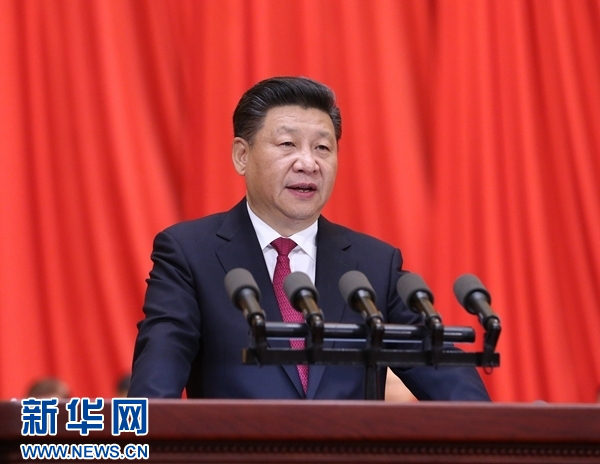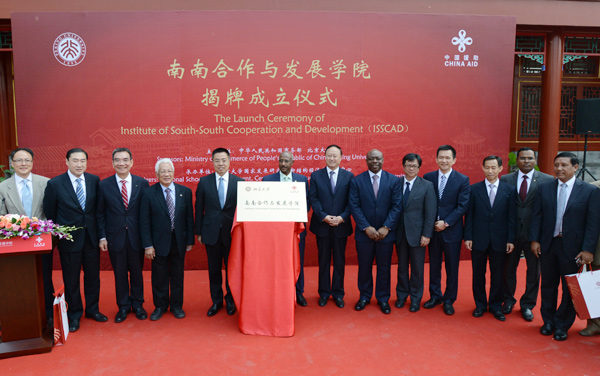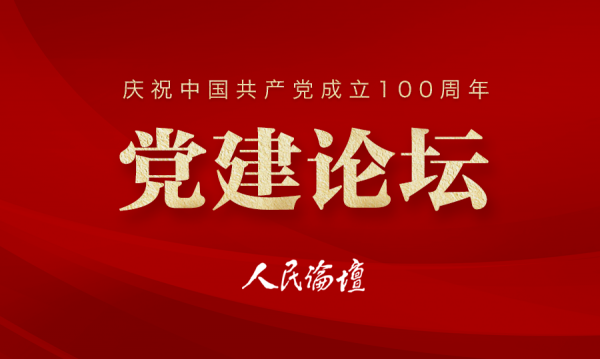"The road problem is the first problem related to the success or failure of the party’s cause, and the road is the life of the party. Socialism with Chinese characteristics is the dialectical unity of the theoretical logic of scientific socialism and the historical logic of China’s social development. It is a scientific socialism rooted in the land of China, reflecting the wishes of the people of China, and adapting to the requirements of China and the development and progress of the times. It is the only way to build a well-off society in an all-round way, accelerate socialist modernization and realize the great rejuvenation of the Chinese nation. "
— — Supreme leader
CCTV News:"To realize the Chinese dream, we must take the road of China". This is the speech made by the Supreme Leader at the first session of the 12th National People’s Congress in 2013.
What kind of road is this?
Why take the road of China?
How to take the road of China?
This answer is written in the century-long change from the poor and weak "clay-footed giant" to the "oriental giant"; Written in the tortuous exploration of generations of the Communist Party of China (CPC) people who are brave and indomitable; It is also written in the deepening reform process of the current hoof.
Socialism with Chinese characteristics road, in this great country, is a choice and a practice; It is the Pentium of the river and the sea, and it is also the growth of a leaf.
Since the 18th National Congress of the Communist Party of China, the CPC Central Committee with the Supreme Leader as the core has pushed forward the reform and opening up with great determination and courage: the state system is more perfect, the rule of law is more prosperous, the social vitality is generate, and the people are stable and happy. In the past five years, under the leadership of the Communist Party of China (CPC), the people of China have made great strides along the road of China and achieved extraordinary achievements.
Perfecting Theory and Innovating Practice in China

On July 1, 2016, the celebration of the 95th anniversary of the founding of the Communist Party of China (CPC) was held in the Great Hall of the People. The supreme leader delivered an important speech at the conference. (Source: Xinhua News Agency)
"Adhere to Socialism with Chinese characteristics’s road self-confidence, theoretical self-confidence, institutional self-confidence and cultural self-confidence, unswervingly adhere to the party’s basic line, and constantly push forward the great cause of Socialism with Chinese characteristics." At the celebration of the 95th anniversary of the founding of the Communist Party of China (CPC), the Supreme Leader once again stressed that the road to Socialism with Chinese characteristics must be long-term and unshakable.
This is a road chosen jointly by the party and the people. From revolution to construction, from reform to development, Socialism with Chinese characteristics’s road did not come out of thin air. It comes from practice, from the people and from the truth, bearing the ideals and beliefs of several generations of the Communist Party of China (CPC) people, pinning the long-cherished wishes and expectations of countless people with lofty ideals, and condensing the struggles and hopes of hundreds of millions of people.
This is a road born of quenching in history and time. It has condensed the spiritual strength of Chinese civilization for 5,000 years, summed up the development course of more than 170 years since modern times, condensed the continuous exploration of New China for nearly 70 years, and experienced the practical test of reform and opening up for nearly 40 years. The world today is turbulent, but "only this road and no other road can lead China to progress and realize people’s well-being".
This is a revolutionary road of continuous self-improvement and self-renewal. Since the 18th National Congress of the Communist Party of China, the supreme leader has put forward a series of scientific theories and practical arrangements for reform and development based on the national conditions, which innovatively enriched the connotation and extension of Socialism with Chinese characteristics Road.
Building a well-off society in an all-round way, deepening reform in an all-round way, governing the country according to law in an all-round way, and strictly administering the party in an all-round way, from palliative to radical, and combining goal consciousness with problem orientation, "four comprehensiveness" has become the internal logic of the Party Central Committee in governing the country.
The new development concept of innovation, coordination, green, openness and sharing has enriched and developed Socialism with Chinese characteristics’s theoretical foundation, which embodies the development ideas, development direction and development focus of China in the past five years or even longer.
The five-in-one overall layout of economic construction, political construction, cultural construction, social construction and ecological civilization construction is a scientific answer to the important strategic question of "what kind of development and how to develop" in China at present, and has defined the areas and directions of efforts for the goal of "two hundred years" and the realization of the Chinese dream.
The road determines the fate, and the road changes the fate. China Road is bringing a brand-new situation to this ancient country.
Adhere to the Party’s leadership and make new achievements on the road of China.
"It’s a ship standing on the coast and looking out into the sea, and the tip of the mast can already be seen. It’s a sunrise standing on the top of a mountain and looking out to the east, and it’s a baby that is about to mature and restless in its mother’s womb."
A few pages of yellowed manuscript paper existing in the Central Archives record an immortal and glorious history. This is the manuscript of A single spark can start a prairie fire.
The Communist Party of China (CPC), since its birth, has shouldered the historical mission of realizing the great rejuvenation of the Chinese nation. "The party is strong, the party maintains flesh-and-blood ties with the people, the country will be prosperous and stable, and the people will be happy and healthy."
Under the leadership of the Communist Party of China (CPC), the people of China have achieved great victories one after another in national revolution, national construction and reform and opening up through arduous exploration and struggle. Socialist China, which accounts for nearly a quarter of the world’s population, once again stands tall among the nations of the world.
History and practice have repeatedly proved that the most fundamental guarantee and feature of China Road, whether in the past or in the future, is to always adhere to the Communist Party of China (CPC)’s leadership. Not trapped in the past, not confined to reality, not afraid of challenges. Since the 18th National Congress of the Communist Party of China, standing at a brand-new historical starting point, the CPC Central Committee with the Supreme Leader as the core has explored and advanced with extraordinary courage and wisdom, led the people of China to forge ahead on the road of China, and made remarkable achievements.
— — The economy maintained a medium-high speed growth. From 2013 to 2016, China’s GDP grew at an average annual rate of 7.2%, which was higher than the average growth level of 2.5% in the world and 4% in developing economies in the same period, and its average contribution rate to world economic growth reached over 30%, ranking first in the world.

On July 8, 2017, China’s first aircraft carrier, Liaoning Ship, was opened to the public in Hongkong. (Source: Xinhua News Agency)
— — A number of "great powers and heavy weapons" have created a new height of national strength. The first domestic aircraft carrier, the new 10,000-ton destroyer Type 055 and the world’s largest crane ship were launched one after another. New breakthroughs have been made in manned space technology; Mozi, the world’s first experimental satellite for quantum science, was successfully delivered & HELIP; …
— — The people’s sense of gain has been significantly enhanced. Facing the problem of difficult and expensive medical treatment for residents, we will continue to deepen the reform of public hospitals; Respond to people’s concerns about food safety and amend the Food Safety Law; The salary reduction of state-owned enterprise executives and the reform plan of endowment insurance system of institutions and institutions were introduced; Cancel and decentralize a number of administrative examination and approval items, and the people will handle affairs more smoothly from now on; Green water and green mountains, blue sea and blue sky reshape beautiful homeland … …
"The key to running China well lies in the party." Only by adhering to the leadership of the Communist Party of China (CPC) can we give full play to the superiority of the Socialism with Chinese characteristics system and broaden the road of China.
The concept of peaceful development benefits the world. China Road opens up a new realm.
"We are eager to know, can become the world’s second largest economy, what’s the secret of China? I want to learn from China’s development model and find a path suitable for the development of our country. "
In September 2016, Chipande Doradeya Albert, adviser of Mozambican Ministry of Finance, came to China and sat in a classroom in unnamed Hubei, Peking University, and raised such a question.
There are 48 special "students" in this classroom. They are middle and senior government officials and social group leaders from 27 developing countries in Africa, South Asia, Central Asia, the Middle East and Latin America.

On April 29th, 2016, the Institute of South-South Cooperation and Development held its inauguration ceremony at the National Development Research Institute of Peking University. (Source: Ministry of Commerce website)
This special college, named "South-South Cooperation and Development College", was announced by the supreme leader at United Nations Headquarters in September 2015. "We have summed up the experience of developing countries such as China into a general theory for other developing countries to formulate policies in light of their own reality." Dean Lin Yifu introduced the purpose and mission of the college.
This is like a metaphor. From being a "student" on the road to modernization to gathering talented people to teach, China’s unique development path in the historical process has begun to go abroad and benefit the world.
"From a diplomatic perspective, the China Road is a path of peaceful development." Ruan Zongze, executive vice president of China Institute of International Studies, pointed out that China’s development along its own correct path will generate positive energy for the world.

On April 14th, 2015, the 44th London Book Fair officially opened. The multilingual edition of The Supreme Leader’s Talks on Governing the Country, which made its debut at the London Book Fair, has attracted great attention from all walks of life. (Source: Xinhua News Agency)
The Supreme Leader’s Talk on Governing the Country has been selling well since its publication, which has aroused strong repercussions around the world, and the total global distribution has exceeded 6.2 million copies. Former French Prime Minister Jean-Pierre raffarin read this book carefully and made detailed reading notes.
Bambang Suryono, Chairman of the Indonesian ASEAN Nanyang Foundation, believes that the China model is increasingly attractive in the world and is worth learning from by developing countries. The Indonesian government needs to learn from China’s experience in precisely helping the poor and fundamentally alleviating poverty.
In recent years, China has made great efforts to advocate and take the lead in practicing diplomatic ideas such as "win-win cooperation", "jointly building and sharing" and "building a community of human destiny", and has contributed more Chinese programs and development momentum to international governance. From proposing the "Belt and Road Initiative" to building a win-win new international relationship, from proposing the establishment of an Asian infrastructure investment bank to actively participating in solving various major international problems, China is playing an increasingly important role on the world stage.
"China is playing an increasingly important leading role in global governance. The international community should welcome the principles and initiatives put forward by China. The Chinese dream and the world dream are increasingly linked." This is a vivid summary by klaus schwab, Chairman of the World Economic Forum.
"Standing on the vast land of 9.6 million square kilometers, sucking the cultural nutrients accumulated by the long struggle of the Chinese nation, with the majestic power of 1.3 billion China people, we have taken our own road, have an incomparably broad stage, have an incomparably profound historical heritage and have an incomparably strong determination to move forward."
Carrying history and tradition, shouldering today and the future.
A new journey is just around the corner. On the road ahead, socialist China has the ability to write more wonderful stories. The world will see more beautiful scenery of China. (Text/Fan Fan)







































